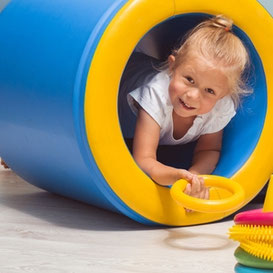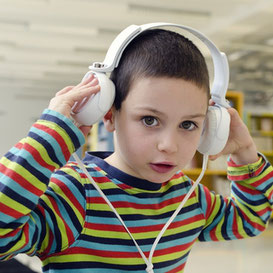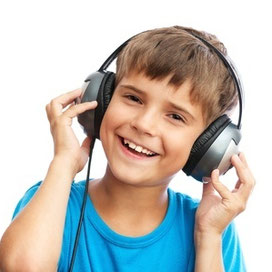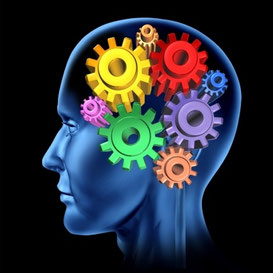Programs & Treatment Approach
SENSORY INTEGRATION
Sensory processing disorder is a condition in which the brain has trouble receiving and responding to information that comes in through the senses.
Some people with sensory processing disorder are oversensitive to things in their environment. Common sounds may be painful or overwhelming. The light touch of a shirt may chafe the skin.


FLOORTIME
As its name suggests, Floortime encourages parents to engage children literally at their level – by getting on the floor to play. Families can combine it with other behavioral therapies or use it as an alternative approach.
In Floortime, therapists and parents engage children through the activities each child enjoys. They enter the child's games. They follow the child's lead. Therapists teach parents how to direct their children into increasingly complex interactions. This process, called “opening and closing circles of communication,” remains central to the Floortime approach.
iLs integrated listening system
iLs is based on the fact that we can change our brain – we can essentially re-wire it through specific and repeated stimulation, a concept known as neuroplasticity. As in building strength and endurance with physical exercise, we are able to build neurological pathways and synaptic activity at any age.
iLs trains for brain/body integration through a staged approach, starting with the fundamentals of sensory integration and then extending through more complex cognitive functions, including language, self-expression and social skills.


Therapeutic listening
Listening is a function of the entire brain and goes well beyond stimulating the auditory system. It is a voluntary act. Active listening is dynamic and continually adapting. Listening requires the desire to communicate and the ability to focus the ear on certain sounds selected for discrimination and interpretation. An individual actively listens and directs attention to sounds in the environment with the whole body.
For more information about Therapeutic Listening click here.
The S.O.S. feeding
The SOS Approach focuses on increasing a child’s comfort level by exploring and learning about the different properties of food. The program allows a child to interact with food in a playful, non-stressful way, beginning with the ability to tolerate the food in the room and in front of him/her; then moving on to touching, kissing, and eventually tasting and eating foods.
For more information about the S.O.S. Feeding approach click here.


Executive functioning
Executive function is a set of mental skills that help you get things done.
Executive function helps you:
- Manage time
- Pay attention
- Switch focus
- Plan and organize
- Remember details
- Avoid saying or doing the wrong thing
- Do things based on your experience
When executive function isn’t working as it should, your behavior is less controlled.
For more information about Executive Functioning click here.
Handwriting without tears
The Handwriting Without Tears® curriculum draws from years of innovation and research to provide developmentally appropriate, multi-sensory tools and strategies for your classroom. The program follows research that demonstrates that children learn more effectively by actively doing, with materials that address all styles of learning.
For more information about Handwriting Without Tears click here.

